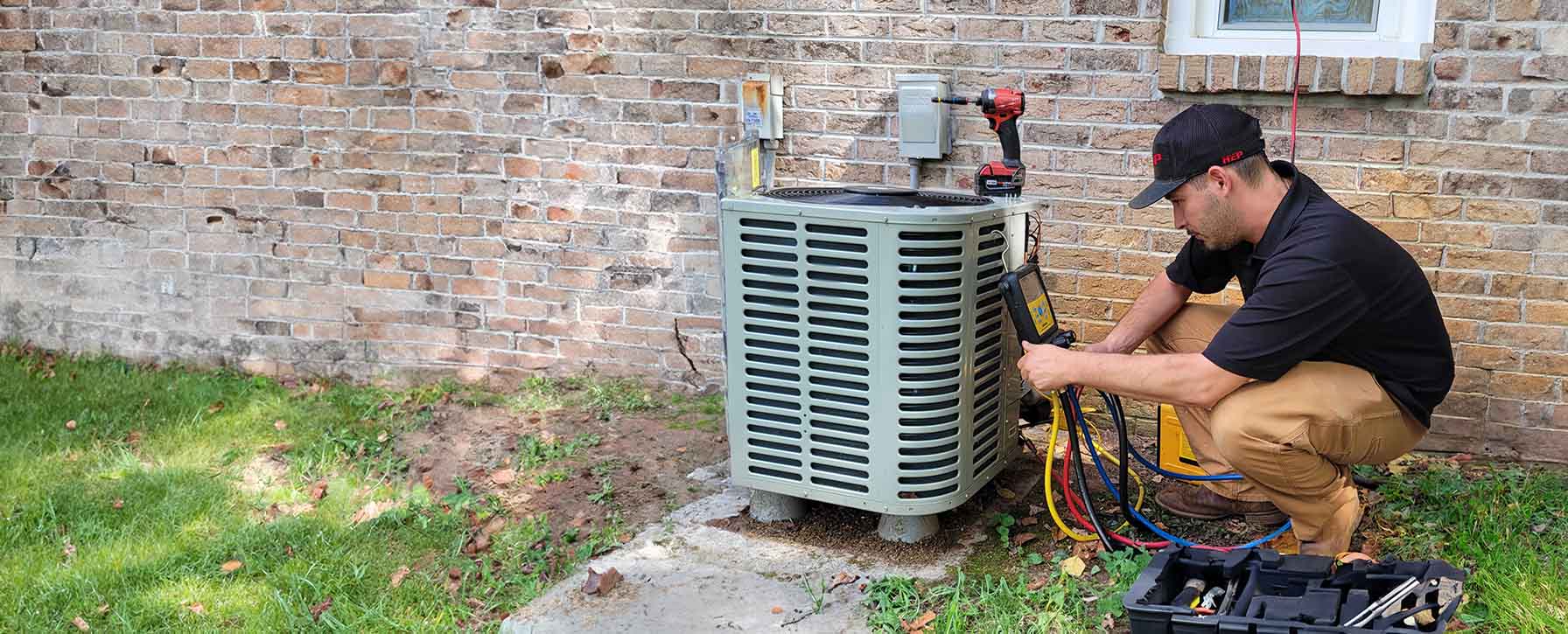

High-efficiency HVAC
Your trusted partner for professional home services. Quality workmanship, guaranteed satisfaction.




- HEP
- High-efficiency HVAC
High-efficiency HVAC | Ventilation and Air Quality | Heating and Air Conditioning | Tullahoma
When Tullahoma’s humidity spikes or the winter chill sneaks in, HEP keeps indoor climates perfectly comfortable with cutting-edge, high-efficiency HVAC systems. Our NATE-certified technicians design, install, and maintain equipment that sips energy while delivering consistent warmth and refreshing cooling—so you enjoy lower utility bills without sacrificing an ounce of comfort.
But comfort is only part of the equation; true home wellness hinges on superior ventilation and air quality. From whole-home air exchangers that sweep out stale, contaminated air to advanced filtration and UV purification that neutralize allergens, odors, and airborne pathogens, we engineer customized solutions that let every breath feel lighter and cleaner.
Whether you’re renovating an older Tullahoma classic or fine-tuning a new build, HEP’s personalized approach and 24/7 support give you the peace of mind that comes with healthier air, greater energy savings, and hometown service you can trust.
FAQs
What makes a high-efficiency HVAC system different from a standard unit?
High-efficiency systems use advanced compressors, variable-speed blowers, and electronically commutated motors (ECMs) to deliver the exact amount of heating or cooling needed. They often carry SEER2 ratings of 16–20+ for air conditioners and AFUE ratings of 95–98% for gas furnaces, compared with 14.3 SEER2 and 80% AFUE on basic models. The result is lower energy use, quieter operation, and improved humidity control—especially important in Tullahoma’s warm, moderately humid summers.
How much can I expect to save on my utility bills by upgrading to a high-efficiency HVAC system in Tullahoma?
Savings vary with home size, insulation, and usage habits, but most Middle Tennessee homeowners see 20–40% lower heating and cooling costs after replacing a 10- to 15-year-old unit with a new high-efficiency model. For example, a typical 2,000-sq-ft Tullahoma home spending $200 per month on peak-season utilities could save $40–$80 monthly. Local TVA EnergyRight rebates and possible federal tax credits under the Inflation Reduction Act can further shorten the payback period to 5–7 years.
Why is proper ventilation important for indoor air quality (IAQ)?
Tight, well-insulated homes trap pollutants such as dust, pet dander, volatile organic compounds (VOCs), and excess humidity. Mechanical ventilation—through energy recovery ventilators (ERVs) or heat recovery ventilators (HRVs)—exchanges stale indoor air with filtered outdoor air while minimizing energy loss. In Tullahoma’s mixed-humid climate, an ERV is usually preferred because it helps balance both moisture and temperature, reducing mold risk and musty odors year-round.
What indoor air quality add-ons pair well with a high-efficiency HVAC system?
Common IAQ upgrades include MERV-13 or higher pleated filters, whole-home media air cleaners, UV-C germicidal lights for coil disinfection, bipolar ionization devices for particle reduction, and whole-house dehumidifiers or humidifiers. Your HVAC installer can conduct an IAQ audit and recommend a combination tailored to allergies, asthma, or humidity issues common in the Tullahoma area.
How often should I service a high-efficiency HVAC system and its IAQ components?
Semi-annual professional maintenance—once in spring for cooling and once in fall for heating—is crucial. Technicians will clean coils, verify refrigerant charge, calibrate thermostats, and inspect ECM motors and ventilation equipment. Filters should be checked monthly and replaced every 60–90 days (or according to manufacturer guidelines). UV lamps typically need bulb replacement every 12–24 months.
Can I finance a new high-efficiency HVAC and ventilation system?
Yes. Many Tullahoma HVAC contractors partner with lenders offering low-interest or 0% promotional financing for 12–72 months. TVA EnergyRight loans, local credit-union green-energy programs, and federal tax credits covering up to 30% of installed costs (with caps) can reduce out-of-pocket expenses. Always request a detailed quote that includes estimated energy savings and available incentives to see the true net cost.